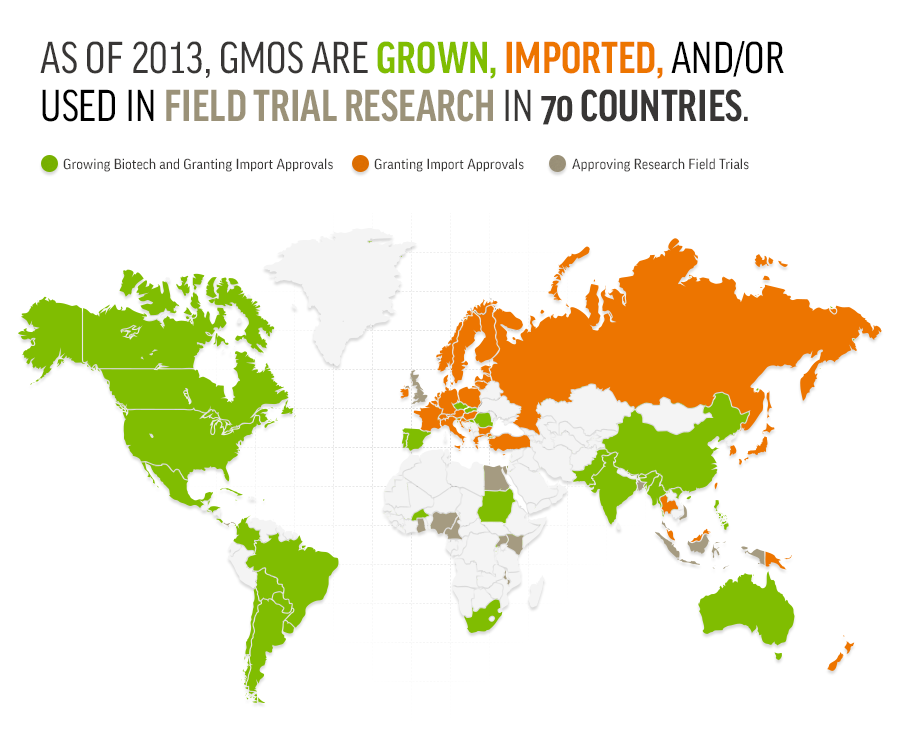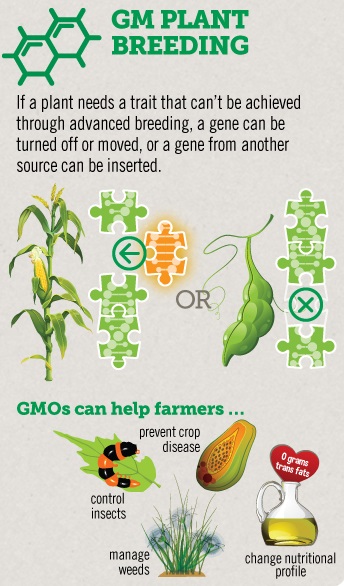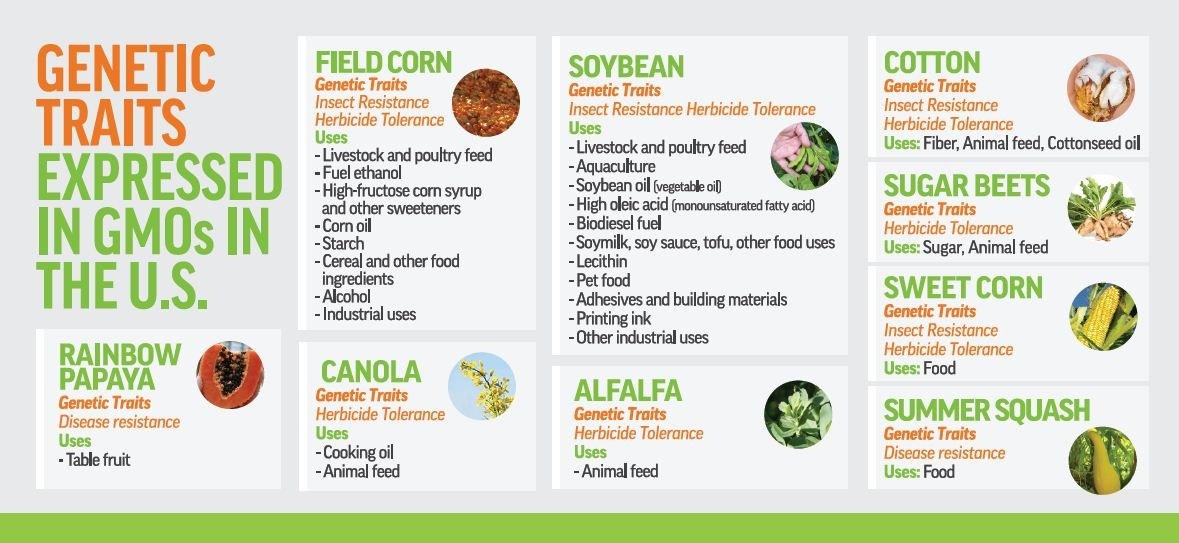Get to Know GMOs Month - GMO Basics
During October, GMO Answers encourages you to Get to Know GMOs. Ask your toughest questions and join the conversation online. Each week we’re posting new information to help you get to know GMOs and better understand the role of biotechnology in agriculture.
There’s a lot of information about GMOs online. Wading through it all to find facts can be a challenge. This week we’re cutting through the clutter and helping you get answers to your GMO questions.
First, what are GMOs?
When people refer to Genetically Modified Organisms, GMOs, they are referring to precision plant breeding using genetic engineering. It allows plant breeders to take a desirable trait (like resistance to drought, insects, weeds, and disease) from one plant or organism and transfer it to the plant they want to improve, as well as make a change to an existing trait in a plant they are developing.
You may have also heard of agricultural biotechnology or biotech seeds. These are terms that may be used to refer to the same thing – a genetically modified organism (GMO).
Why GMO? GMOs are created to achieve a desired trait, such as resistance to an insect or improvement to the ripening process, in order to better meet a customer’s needs. The eight GM crops available today (sweet and field corn, soybeans, cotton, canola, alfalfa, sugar beets, papaya, and squash) were created for:
-
-
- Insect resistance. This trait provides farmers with season-long protection against target pests, reduces the need for pesticide applications, and lowers input costs.
- Drought resistance. GM crops that express drought resistance can grow in much drier areas, conserving water and other environmental resources.
- Herbicide tolerance. Crops that can tolerate specific herbicides allow farmers to fight weeds by applying herbicides only when needed and enable them to use no-till production methods that preserve topsoil, prevent erosion, and reduce carbon emissions.
- Disease resistance. Through genetic modification, the Hawaiian papaya industry was able to recover from the devastating papaya ringspot virus that had crippled the industry.
- Increased/enhanced nutritional content. Currently in development are genetically modified soybeans with an enhanced oil profile, much like olive oil, made to be longer lasting and trans fat free.
-
How is a GMO made?
GMOs can have one or a few genes added, moved or turned off to achieve the desired trait. This video explains how genetic engineering was used to make the Hawaiian papaya resistant to the deadly papaya ring spot virus.
Curious what this all looks like? See the differences between genetic engineering and traditional breeding in this infographic.
Who grows GMOs?
Think only U.S. farmers grow GMO crops? You might be surprised to know that while each country has its own regulatory process for both the cultivation and sale of GM products, as of 2013, GMOs are grown, imported and/or studied in field trial research in 70 countries.

From South Africa to China to the EU, there is a global community of farmers growing the biotech crops. When the 4 billionth biotech seed was planted in April 2014, Spanish farmer Jose Luiz Romeo was asked why he grows GMOs, and said, "Although GM crops may be common, they are anything but ordinary. They are extraordinary plants that allow the worlds farmers to grow more food on less land." As Fourat Janabi points out in this post on GMOAnswers, "Since 1961, we’ve increased yield by 300%, and only had to increase our land use by 12% to do so...By 2050, we will need to almost double yield without an increase in land usage."
This week, we'll pass the 4 billionth acre mark for biotech crops harvested globally! What does 4 billion acres look like? It's 1.5 times the size of Europe, nearly as big as South America. Bill Horan, chairman of Truth About Trade and Technology notes that, "four billion acres of biotech crops have filled a lot of stomachs, and biotech is one of the answers for meeting agriculture's goal to feed 9 billion people by the year 2050."
Looking for more information?
Learn more about the science of GMOs, clear up five common misconceptions about GMOs, and meet some of the people who study and grow GMOs in our month-long Get to Know GMOs series!
- Learn the ABC’s of GMOs from the Seattle Times here.
- Follow our GMO Basic Pinterest board.
- Understand more about what foods are GMOs here.
- Check out these side-by-side images of GMO crops and their non-GMO counterparts.
- Discover six surprising facts about GMOs here.
If you have additional questions, feel free to search our archives.


